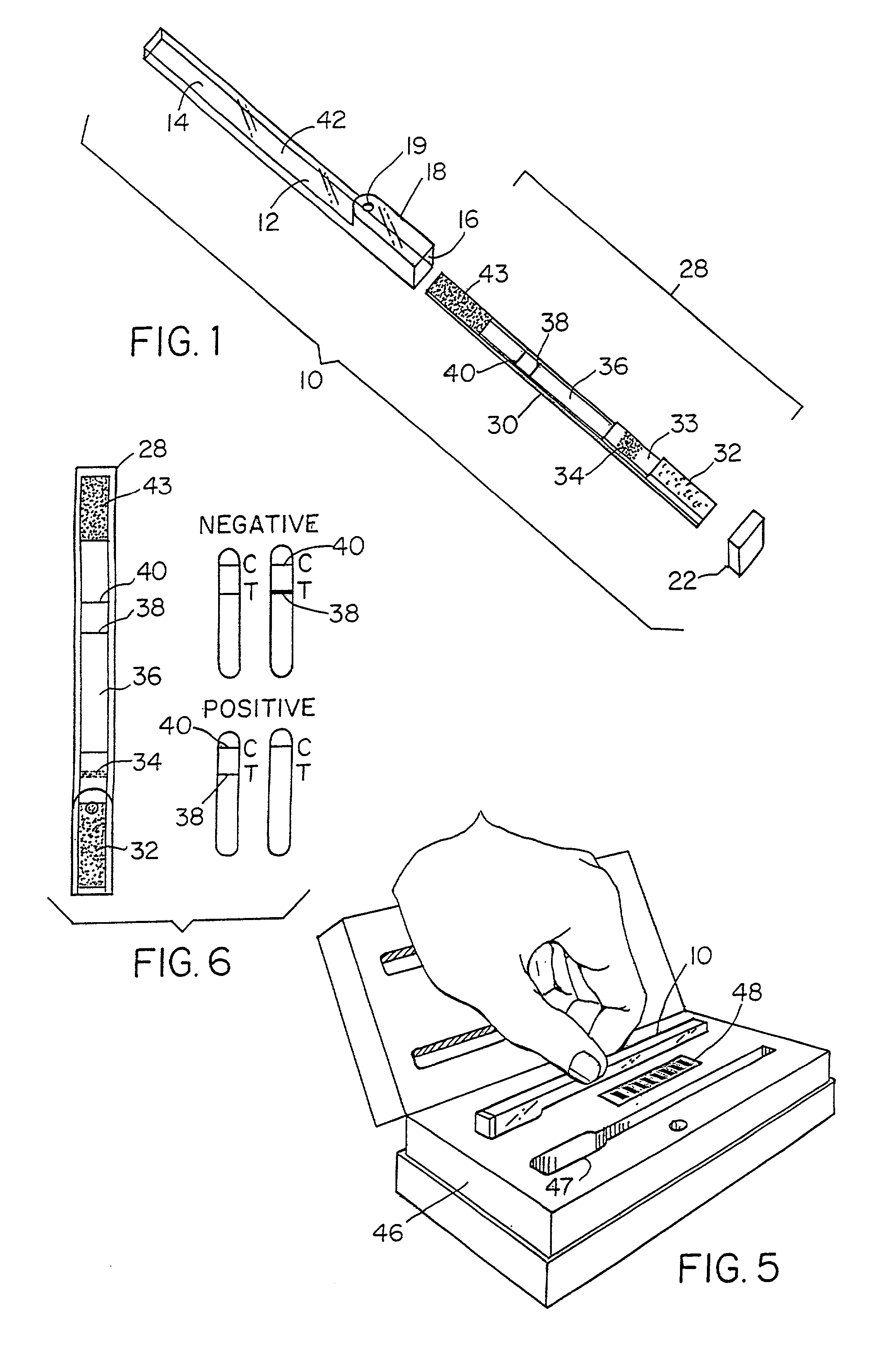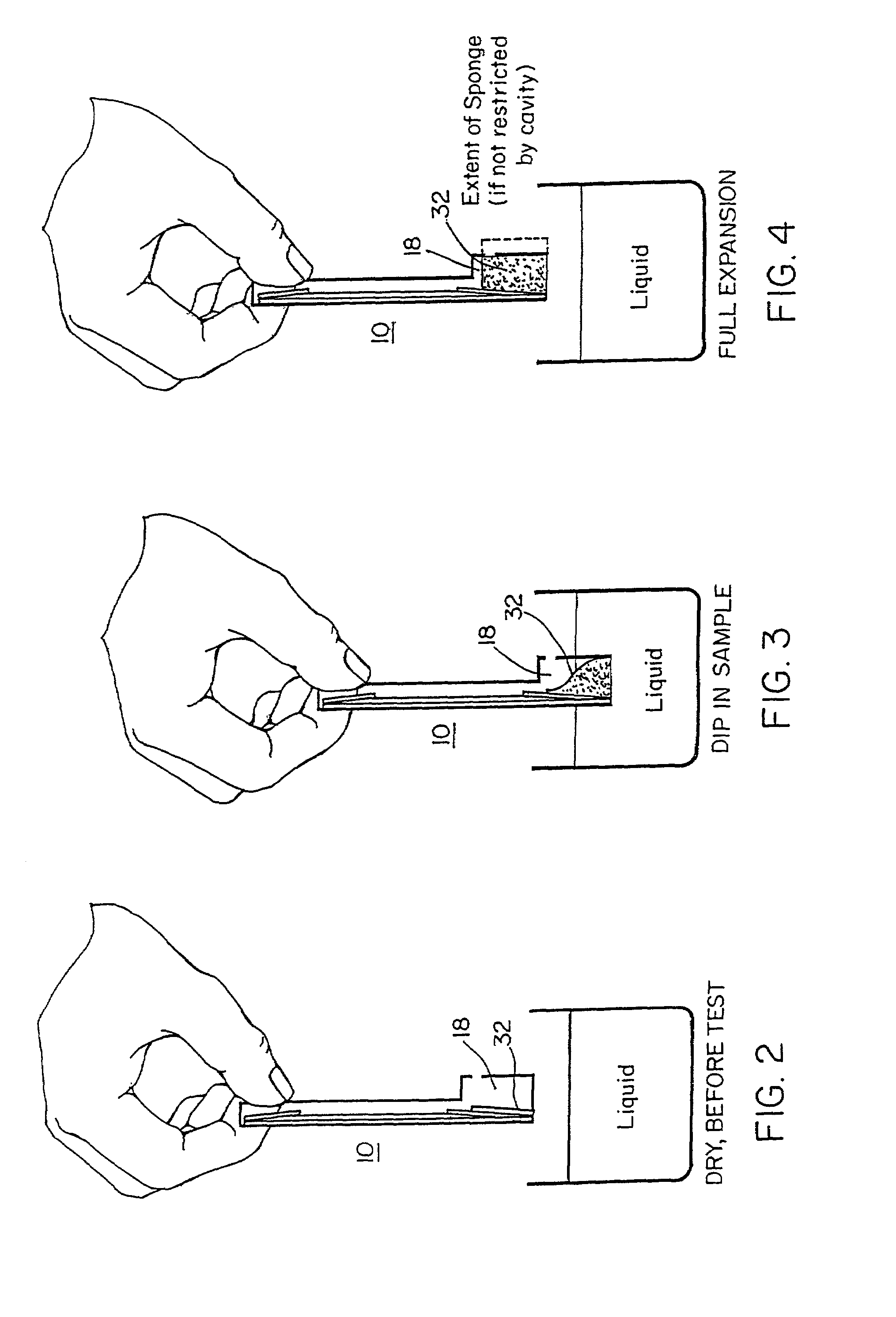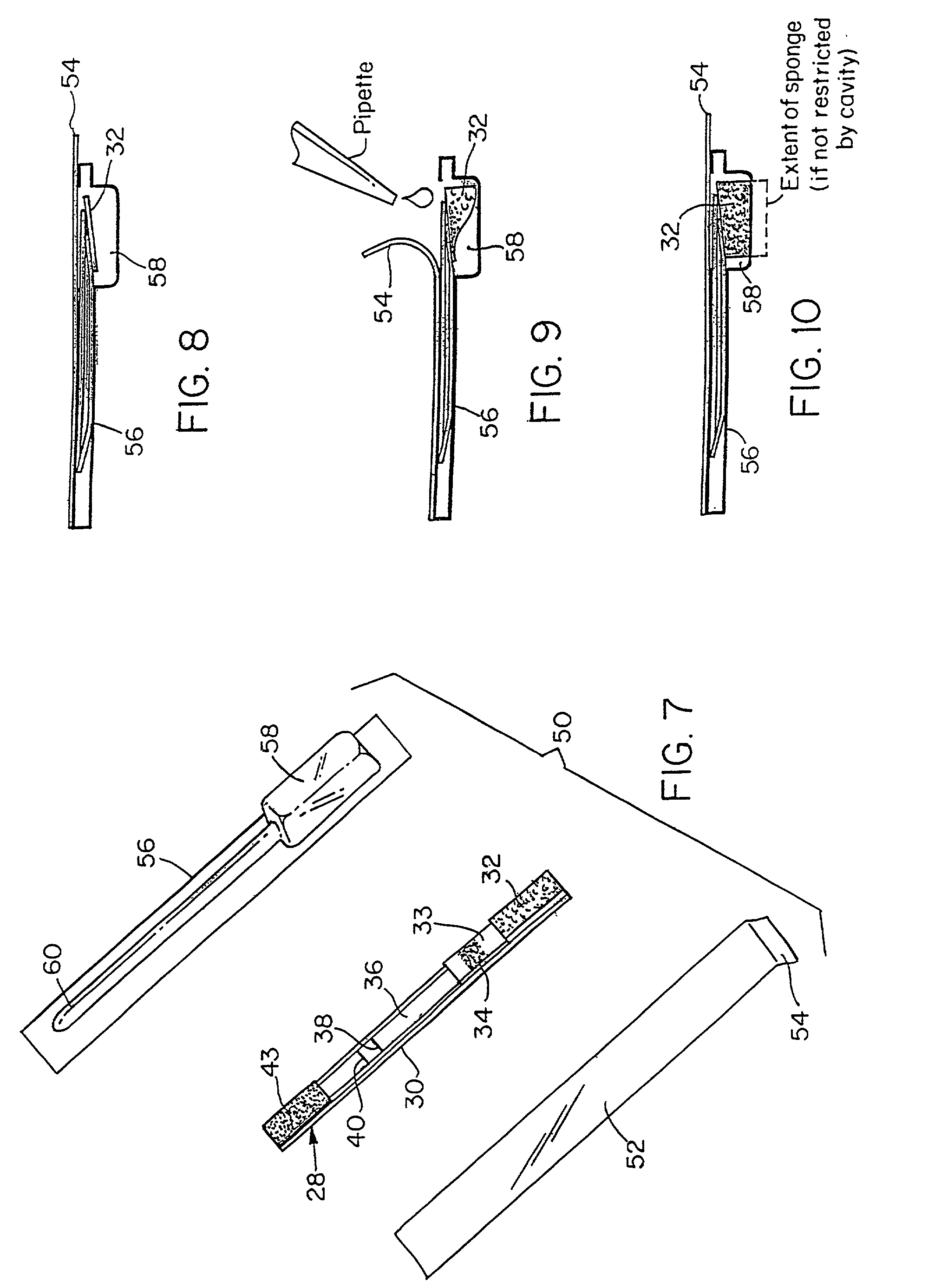Method for detecting the presence of an analyte in a sample
a technology for detecting the presence of analytes in samples, applied in the direction of oxidoreductases, fatty acid esterification, fatty acid hydrogenation, etc., can solve the problems of unsafe human consumption of residues above the “legal” limit, allergic reactions, etc., and achieve high purity.
- Summary
- Abstract
- Description
- Claims
- Application Information
AI Technical Summary
Benefits of technology
Problems solved by technology
Method used
Image
Examples
example # 1
EXAMPLE #1
Lateral-Flow Test Kit for Tetracyclines in Milk, Serum and Meat Extract
[0107]A lateral-flow test kit for tetracyclines includes: a test zone made of BSA-TET conjugate, a control line made of Goat Anti-Rabbit IgG, and a mobile phase made of Anti-TET Rabbit Antibodies-Gold conjugate
BSA-TET Preparation
[0108]444.4 mg of tetracycline is dissolved in 5 ml of THF (tetrahydrofuran) and 1.5 ml of 0.2 M sodium bicarbonate is slowly added. 240.3 mg of L-Cystine are added together with 111 μl of formaldehyde 37%. The mixture is incubated at 40° C. for 30 minutes and placed on a shaker at room temperature for 2 hours. The mixture is centrifuged at 4,000 rpm for 3 minutes. A minimum yield of 60% product is verified by HPLC (high performance liquid chromatography). 463 mg of DL-Dithiothreitol is then added to the supernatant. The mixture is placed on a shaker at room temperature for 30 minutes and centrifuged at 4,000 rpm for 3 minutes. The supernatant is precipitated into acetone and th...
example 2
Lateral-Flow Test Kit for Quinolone in Milk, Meat or Serum
[0119]The lateral-flow test kit for quinolone includes: a test zone made of BSA-quinolone conjugate, a control zone made of Goat Anti-Rabbit IgG, and a mobile phase made of Anti-quinolone antibodies—Gold conjugate.
Test Zone: BSA-QUINOLONE Conjugate Formation
Quinolone BSA Preparation
Specific Conjugate (or Immunogen)
[0120]The following conjugation links the carboxylic acid of quinolones to the primary amine group on proteins. For immunogen, KLH (keyhole limpet hemocyanin) or OVA (ovalbumin) can be used while for the assay BSA is used. 40 mg ciprofloxacin or enrofloxacin are dissolved in water or DMSO (dimethylsulfoxide) respectively, and then added drop wise to a stirred BSA solution (100 mg / 10 ml 0.1M MES buffer, pH 4.7). 100 mg of 1-ethyl-3[-dimethylaminopropyl] carbodiimide hydrochloride (EDC) are added and the solution is stirred for 2 hours at RT in the dark. The product is then dialyzed 3 times against 1000 ml of 20 mM ph...
example 3
Lateral-Flow Test for Aflatoxin in Milk, Feed, Corn, and Peanut Extract
[0136]Construction of the aflatoxin test device is common with the beta-lactam lateral-flow device. Some modifications are required for adapting the assay to various matrices, e.g., milk, feed extracts, etc.
[0137]The lateral-flow test for aflatoxin includes: a test zone made of BSA-aflatoxin conjugate, a control zone made of Goat Anti-Rabbit IgG, and a mobile phase made of anti-aflatoxin antibodies—Gold conjugate.
Mobile Phase Construction
[0138]Broad spectrum Rabbit anti-aflatoxin antibodies are prepared using Protein A affinity chromatography. The preferred antibodies are those with good cross-reactivity to aflatoxin B1, M1, G1, B2, G2.
[0139]Colloidal gold 10 to 50 nm is prepared at 2 OD540 and coated with a precalibrated amount of purified antibodies as described for the tetracycline test. The colloidal gold beads are further stabilized with 1% bovine serum albumin, washed twice in 2 mM Borax / 1% BSA and concentr...
PUM
| Property | Measurement | Unit |
|---|---|---|
| Temperature | aaaaa | aaaaa |
| Fraction | aaaaa | aaaaa |
| Fraction | aaaaa | aaaaa |
Abstract
Description
Claims
Application Information
 Login to View More
Login to View More - R&D
- Intellectual Property
- Life Sciences
- Materials
- Tech Scout
- Unparalleled Data Quality
- Higher Quality Content
- 60% Fewer Hallucinations
Browse by: Latest US Patents, China's latest patents, Technical Efficacy Thesaurus, Application Domain, Technology Topic, Popular Technical Reports.
© 2025 PatSnap. All rights reserved.Legal|Privacy policy|Modern Slavery Act Transparency Statement|Sitemap|About US| Contact US: help@patsnap.com



